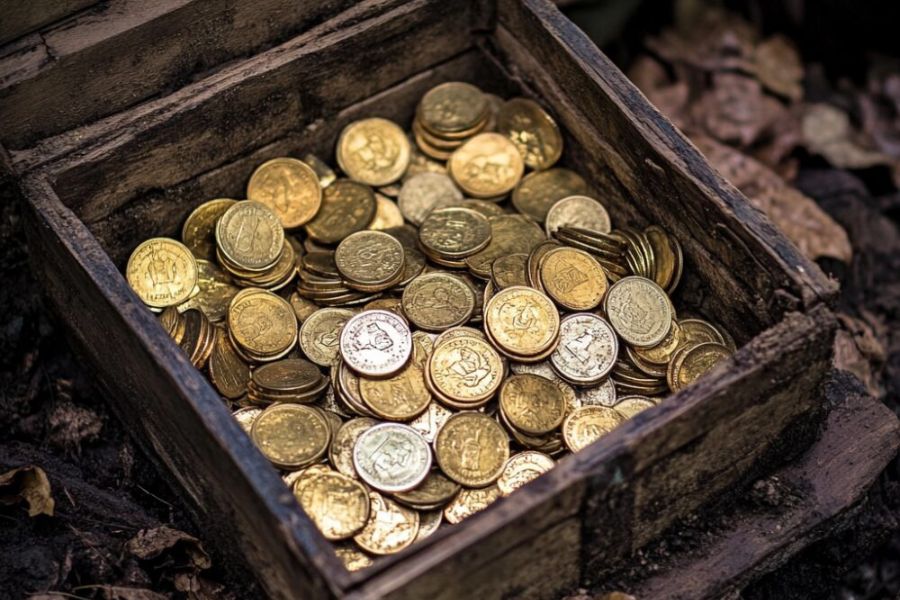Minnesota might be known for its beautiful lakes and wild winters, but it also hides some secrets buried deep in its history. There are stories of lost treasures scattered throughout the state, waiting to be discovered by those who dare to search. From ancient riches to hidden fortunes, Minnesota is a treasure hunter’s dream.
Think about it—fortunes worth millions of dollars could be hidden just around the corner, in the woods, or even under the ground. It’s exciting to learn about these treasures, and it can be even more thrilling to search for them. Whether it’s a legendary chest of gold or long-lost artifacts, the possibilities are endless.
And guess what? You don’t have to be a professional treasure hunter to give it a try. With a little local knowledge and some curiosity, you can explore Minnesota’s rich past and maybe even strike it rich. The state is filled with stories of hidden gems just waiting for someone to uncover them.
The Incredible Treasures Of Minnesota That Are Waiting To Be Discovered
Here are some of the most fascinating and priceless treasures still waiting to be uncovered:
The Lost Treasure of William S. McCaffrey – $10,000,000+
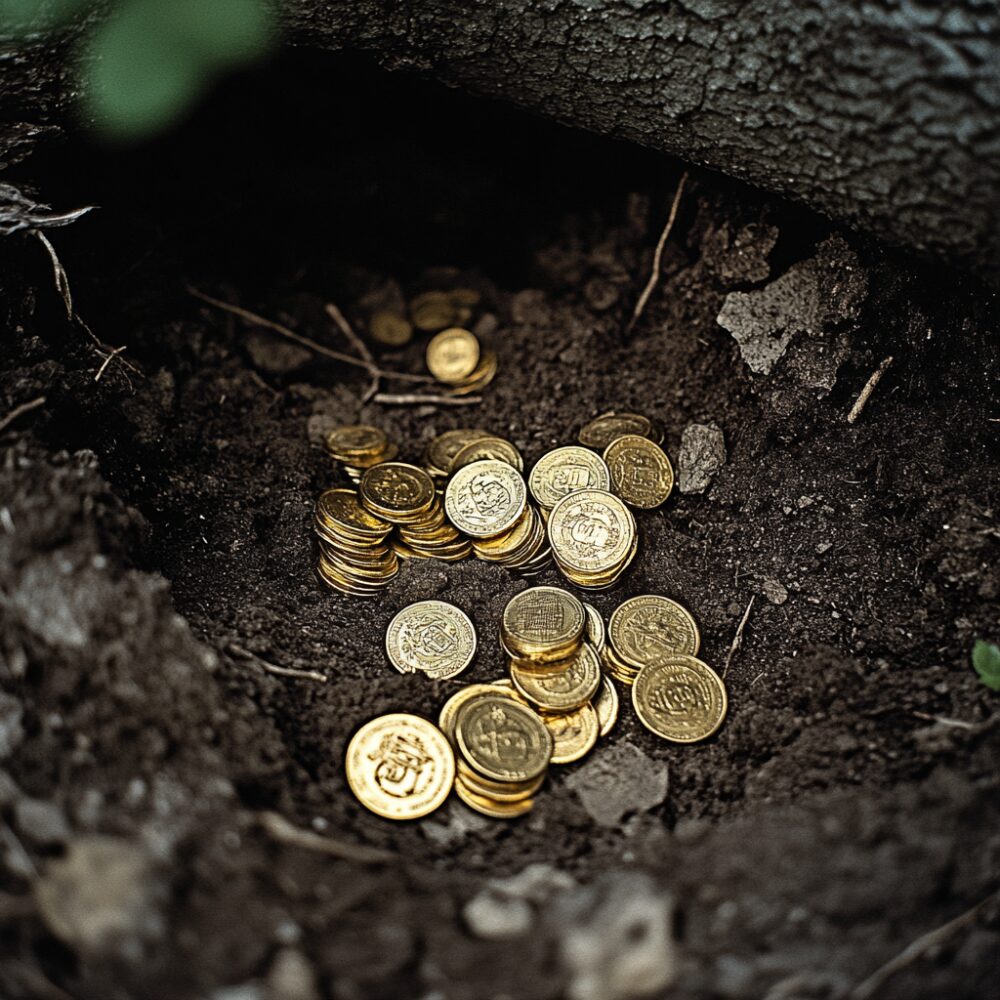
The Lost Treasure of William S. McCaffrey is a famous Minnesota treasure with ties to the 19th century. McCaffrey, a wealthy businessman, is said to have hidden a large fortune near Lake Mille Lacs before his mysterious death. The treasure is rumored to consist of gold coins, jewelry, and valuable artifacts.
McCaffrey was a successful businessman who made his fortune during the early days of Minnesota’s development. Before his death in the 1800s, he allegedly buried his wealth to protect it from potential thieves or trouble. His treasure was never recovered, and the mystery surrounding its location has kept treasure hunters intrigued for years.
The treasure is thought to be buried near the shores of Lake Mille Lacs in central Minnesota. There are various theories about its exact location, but no one has yet discovered where McCaffrey hid it. The area around the lake is known for its dense woods, making the search even more challenging.
The treasure is believed to have been buried sometime in the late 1800s, possibly in the years before McCaffrey’s death. His wealth was hidden in a secret spot, and he never disclosed the exact location to anyone. Since then, treasure hunters have been trying to solve the mystery and recover his lost fortune.
How much the treasure would be worth today
The Lost Treasure of William S. McCaffrey is estimated to be worth around $10 million today. This estimate is based on the value of gold, precious jewels, and other valuables that McCaffrey was thought to have hidden. The treasure’s worth is also affected by the rarity of some of the items and their historical significance.
The Lost Gold of the Great Sioux Uprising – $3,500,000+

The Lost Gold of the Great Sioux Uprising dates back to the violent events of 1862. During the Dakota War, the Sioux tribe looted a number of settlements, including a supply train carrying gold intended for U.S. soldiers. As the conflict grew, the gold was buried to keep it hidden from both soldiers and settlers.
The treasure is believed to consist of several chests filled with gold coins and other valuables. It was likely hidden by a group of Sioux warriors, including chief Little Crow, who led the uprising. The gold was said to have been buried in the forests or along the Minnesota River to prevent it from being seized.
The exact location of the treasure has been a subject of many speculations. Some believe it is hidden near the town of Mankato, where the largest mass execution in U.S. history took place after the conflict. Others think it could be buried along the banks of the Minnesota River, deep in the surrounding woodlands.
The gold was hidden during the aftermath of the Great Sioux Uprising in 1862. As the U.S. Army moved to suppress the rebellion, the Sioux were forced to flee, leaving behind valuable treasures. Despite numerous searches over the years, no one has ever found the gold.
How much the treasure would be worth today
The Lost Gold of the Great Sioux Uprising would be worth millions today. The gold itself, along with any precious artifacts buried with it, would be worth roughly $2 million in today’s market. The exact value depends on the amount and type of gold, but it is likely that it could be worth as much as $3.5 million to collectors and historians.
The Silver Mine of Lake Vermilion – $7,000,000+

The Silver Mine of Lake Vermilion is one of Minnesota’s most enduring treasure legends. In the early 1800s, French fur traders are said to have discovered a rich silver mine near the lake while exploring the region. However, fearing that their discovery would be seized by others, they allegedly buried the silver to keep it hidden.
The treasure is believed to consist of large amounts of silver, possibly in the form of nuggets or raw ore. Some even suggest that the traders may have hidden gold as well. The traders, whose names remain unknown, are said to have buried their riches along the shores of Lake Vermilion, where they thought they would be safe from outside threats.
The exact location of the silver mine remains a mystery, but it is thought to be buried somewhere near the lake in northern Minnesota. Local legend suggests it could be near the forests that border the lake or within one of its many coves. Despite numerous searches over the years, no one has been able to uncover the lost silver.
The silver was hidden sometime around the early 1800s, during the height of fur trading in Minnesota. It is believed that the fur traders, fearing a takeover by other settlers or rival traders, decided to leave the area quickly and abandon the silver. Over the years, many treasure hunters have scoured the area, but the treasure remains elusive.
How much the treasure would be worth today
If the silver mine of Lake Vermilion were discovered today, it could be worth millions. The amount of silver is thought to be significant, with estimates ranging up to several tons of raw ore. Based on current silver prices, the treasure could be worth as much as $5 million. If gold was also hidden with the silver, the total value could reach up to $7 million, making it a highly valuable find.
The Lost Treasure of the Battle of Birch Coulee – $5,000,000+

The Lost Treasure of the Battle of Birch Coulee is linked to one of the deadliest battles of the U.S.-Dakota War of 1862. During the battle, soldiers and settlers were said to have hidden valuables, including gold and silver, to keep them safe from being taken by Dakota warriors. The treasure remains undiscovered and has become a legend tied to this historic event.
The battle took place near Birch Coulee, close to present-day Morton, Minnesota. Soldiers under Colonel Samuel McPhail and settlers fleeing the fighting are believed to have hidden their wealth. Many accounts suggest that the treasure was buried quickly as the battle raged on, leaving little time to mark the exact spot.
The treasure is thought to include coins, jewelry, and other personal valuables buried somewhere near the battle site. Some believe it lies along the wooded coulee or in nearby fields, but the area’s changing landscape has made it difficult to locate. The treasure is tied to the events of 1862, when settlers and soldiers were desperate to protect what little they had.
The U.S.-Dakota War caused chaos and fear, and people fleeing the violence made hasty decisions to hide their belongings. Over time, the location of the buried treasure was forgotten. The story of the lost valuables at Birch Coulee has inspired many treasure hunters to explore the area.
How much the treasure would be worth today
The Lost Treasure of the Battle of Birch Coulee is estimated to be worth $5 million or more. This estimate includes the value of gold and silver coins, jewelry, and other items that were hidden during the battle. The historical significance of the treasure could also add to its overall worth.
The Stolen French Gold at Fort Snelling – $15,000,000+

The Stolen French Gold at Fort Snelling is one of Minnesota’s most intriguing treasure legends. The gold is believed to have been stolen by French fur traders in the early 1800s, during a time of political and economic uncertainty in the region. The treasure, consisting of gold coins and bullion, was supposedly hidden near Fort Snelling to keep it safe.
French fur traders were well-known figures in Minnesota’s history and often traveled with valuable goods. It is said that a group of these traders took gold intended for trade and military payments and secretly buried it. They may have hidden the treasure near Fort Snelling, a key location for trade and defense during that time.
The gold is thought to be buried somewhere near the fort, possibly along the Mississippi or Minnesota Rivers. The exact location is unknown, and over time, the details have become part of local folklore. The treasure is believed to have been hidden in the early 1800s, during a period of significant tension and conflict in the region.
The stolen gold has never been recovered, and it remains one of Minnesota’s enduring mysteries. Treasure hunters have long searched the area around Fort Snelling, but no definitive evidence has ever been found. The legend continues to inspire curiosity and speculation.
How much the treasure would be worth today
The Stolen French Gold at Fort Snelling is estimated to be worth around $15 million. This value is based on the gold’s weight, historical importance, and current market prices. The treasure’s connection to Minnesota’s history could increase its value further.
The Lost Cache of the Red River Expedition – $8,000,000+
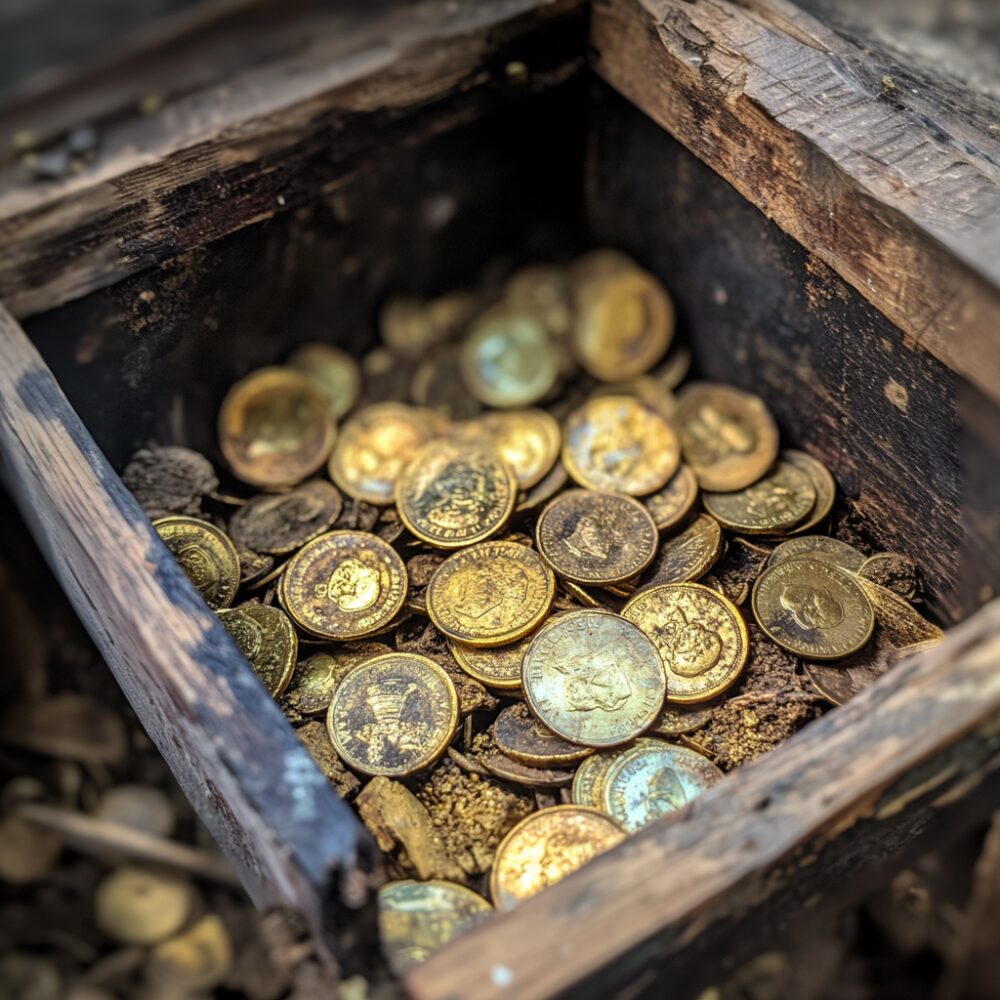
The Lost Cache of the Red River Expedition is tied to a military journey in the mid-1800s. This treasure is believed to have been hidden by U.S. soldiers traveling through Minnesota during the 1849 expedition led by Colonel James K. Calhoun. The cache is said to include gold coins and supplies intended for the military outposts in the region.
The expedition was part of an effort to establish control and maintain peace in the Red River Valley. During the journey, the soldiers faced harsh weather and rugged terrain, making it difficult to transport their goods. To lighten their load and protect valuable items, it is said they buried a portion of the supplies, including gold, somewhere along the way.
The treasure is thought to be buried near the Red River, close to what is now the border between Minnesota and North Dakota. Specific locations mentioned in local lore include riverbanks and wooded areas along the expedition’s route. The gold was hidden in 1849, but due to the hardships of the journey, the soldiers were unable to return and recover it.
The story of the lost cache has been passed down over the years, captivating both historians and treasure hunters. Many have searched for the buried treasure, but its exact location remains a mystery. The tale highlights the challenges faced by early expeditions in the area.
How much the treasure would be worth today
The Lost Cache of the Red River Expedition is estimated to be worth $8 million. This value accounts for the gold coins and supplies buried during the journey, based on their historical and monetary significance. The unique history of the expedition adds further interest and potential value to the treasure.
The Doughboy Treasure – $3,000,000+

The Doughboy Treasure is tied to the aftermath of World War I and the financial struggles of the 1920s. A soldier, or “doughboy,” returning from the war is believed to have hidden a stash of gold coins in northern Minnesota. This soldier reportedly buried his savings to protect them during a time of economic uncertainty, but the exact location of the treasure was lost after his sudden death.
The treasure is thought to consist of gold coins and possibly some personal items of the soldier. The man, whose name has been lost to history, is believed to have buried the cache near his family’s homestead or along a trail in the forests of northern Minnesota. The treasure was hidden in the early 1920s, as fears of economic collapse grew across the country.
Local legends suggest the treasure could be buried near an old logging road or in a secluded clearing. Treasure hunters have searched for clues in the area for years, but no trace of the gold has been found. The story remains a fascinating mystery tied to the sacrifices and struggles of returning soldiers.
How much the treasure would be worth today
The Doughboy Treasure is estimated to be worth around $3 million. This includes the value of the gold coins based on current market prices and their historical significance. The connection to a World War I soldier adds unique value to this hidden fortune.
The Buried Treasure of the Winona Gang – $4,000,000+
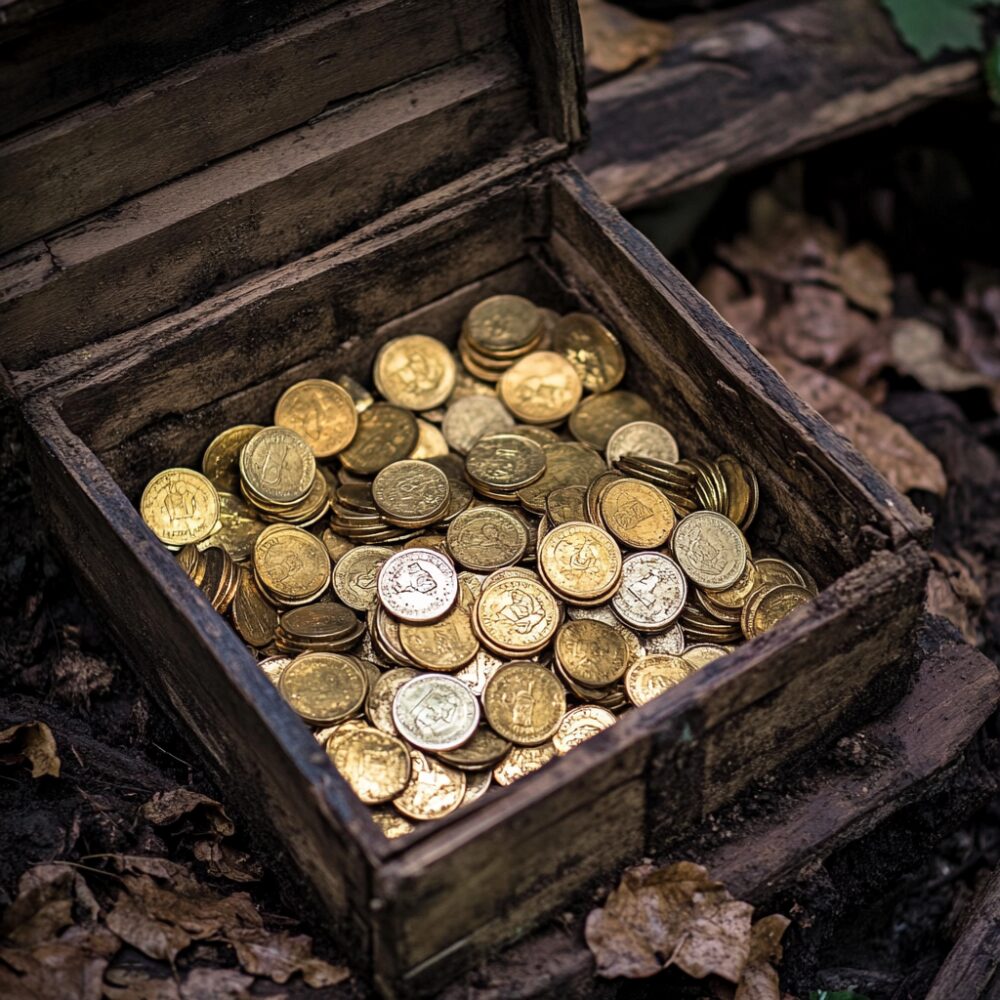
The Buried Treasure of the Winona Gang is a tale of crime, betrayal, and hidden wealth. In the late 1800s, a notorious group of outlaws known as the Winona Gang roamed the area around Winona, Minnesota. After a series of robberies, the gang reportedly buried their stolen treasure to avoid capture and to keep it hidden from law enforcement.
The treasure is believed to consist of gold, cash, and valuable artifacts stolen from trains and local businesses. Led by a criminal named Frank “Big Frank” Connors, the gang buried the loot in a remote location, perhaps near a riverbank or within the woods around Winona. The treasure was hidden sometime in the 1880s, after the gang members decided to lay low following a series of unsuccessful robberies.
The exact location of the treasure remains a mystery, but local lore suggests it could be buried in the hills or near a specific landmark in the region. Numerous treasure hunters have attempted to uncover the hidden fortune, but no one has yet succeeded in finding it. The story of the Winona Gang’s buried treasure continues to captivate those seeking adventure.
How much the treasure would be worth today
The Buried Treasure of the Winona Gang is estimated to be worth around $4 million. This estimate is based on the value of the stolen gold, cash, and antiques, factoring in inflation and historical value. The treasure’s ties to the infamous Winona Gang make it even more valuable to treasure hunters and historians alike.
The Lost Gold of the Pioneers – $5,000,000+
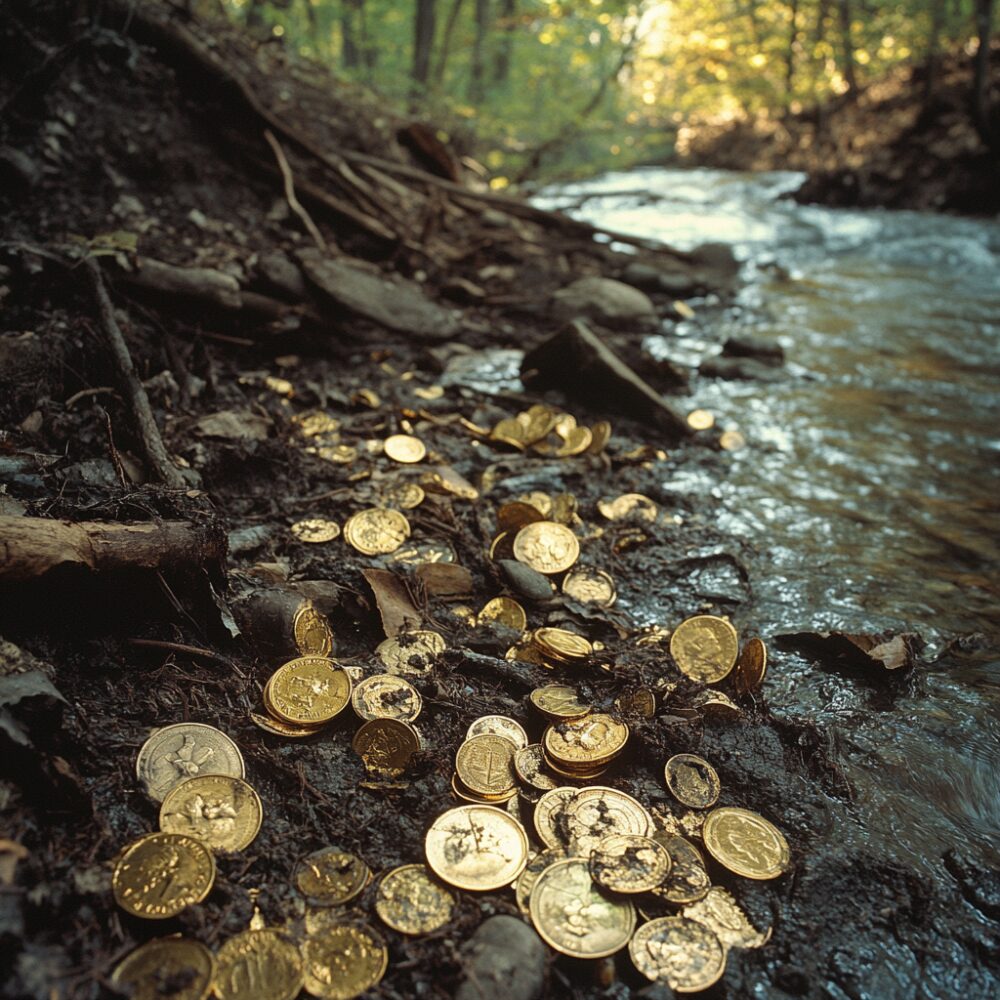
The Lost Gold of the Pioneers is a legend rooted in the struggles of early settlers in Minnesota. In the 1850s, a group of pioneers heading west is believed to have buried a significant amount of gold to protect it from bandits and wild conditions. The group was headed by a settler named William Smith, who reportedly hid the gold to ensure his family’s survival if their journey took a turn for the worse.
The treasure is thought to consist of gold coins, nuggets, and other valuable items collected during the group’s travels. It is believed that Smith and his party buried the gold near a river or in a secluded forest area, possibly somewhere in the southern part of Minnesota. The gold was hidden in the mid-1850s, around the time of the Gold Rush, when the region was seeing an influx of settlers.
The exact location remains a mystery, though some believe it may be hidden in a cave or beneath a large rock formation. Over the years, treasure hunters have combed the area, but no one has been able to confirm the treasure’s whereabouts. The tale of the Lost Gold of the Pioneers remains one of Minnesota’s most enduring and intriguing legends.
How much the treasure would be worth today
The Lost Gold of the Pioneers is estimated to be worth about $5 million. This value includes the gold coins, nuggets, and other valuables based on current market prices. The historical significance of the treasure, along with its connection to early settlers, makes it an even more valuable find today.
The Missing Treasure of Fort Ridgely – $2,000,000+
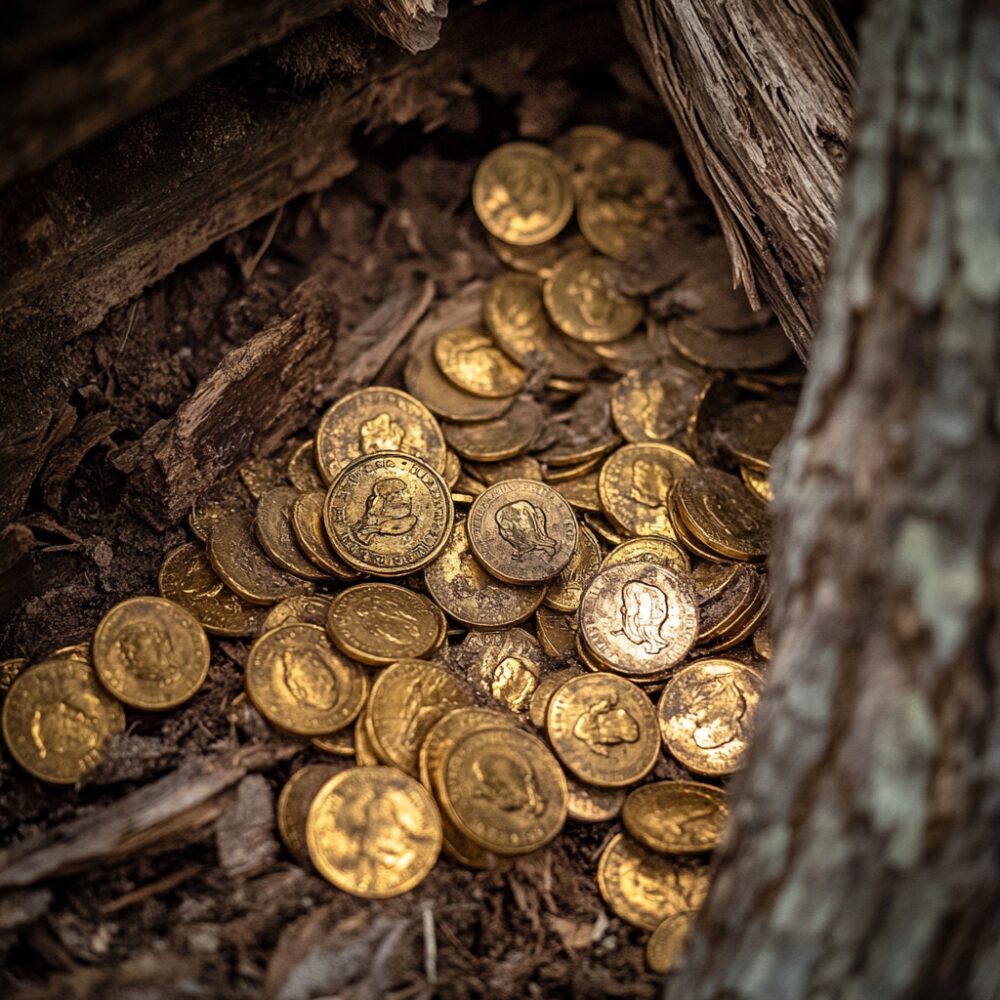
The Missing Treasure of Fort Ridgely is a fascinating story tied to Minnesota’s history during the U.S.-Dakota War of 1862. During the conflict, Fort Ridgely served as a key military outpost in protecting settlers and maintaining supply lines. It is believed that a shipment of gold and other valuables meant to pay soldiers and fund supplies disappeared during this tumultuous time.
The treasure is thought to consist of gold coins, cash, and other valuable resources sent by the federal government. Some accounts suggest that soldiers or local officials hid the shipment to prevent it from falling into enemy hands during an attack. The treasure was likely hidden near the fort or along nearby trails to ensure its safety.
Fort Ridgely was located in what is now Nicollet County, and many believe the treasure is buried somewhere in the surrounding area. Despite years of searching and speculation, the lost treasure has never been recovered. Its connection to the U.S.-Dakota War makes it an intriguing piece of Minnesota’s history.
How much the treasure would be worth today
The Missing Treasure of Fort Ridgely is estimated to be worth around $2 million. This value is based on the gold and cash reportedly included in the shipment, adjusted for inflation and historical significance. Its ties to a pivotal moment in Minnesota’s past add to its allure and potential worth.
The Lost Spanish Gold of Lake Pepin – $2,800,000+

The Lost Spanish Gold of Lake Pepin is a fascinating story tied to early Spanish explorers who ventured through the area in the 1700s. Legend has it that a group of Spanish traders, transporting gold and other valuable goods, faced a dangerous situation near Lake Pepin. Fearing an attack or being unable to carry the treasure further, they are said to have buried the gold near the lake’s shores for safekeeping.
It is believed the treasure consisted of gold coins, bars, and other riches that the traders intended to use for trade or transport back to Spain. While the exact individuals involved remain unknown, the story has been passed down through generations, fueling curiosity and speculation. The treasure is thought to be hidden somewhere along the rugged terrain or in the forests near Lake Pepin, making it a challenging but enticing hunt for modern-day treasure seekers.
The gold was likely buried in the late 1700s during a period when Spanish influence extended into parts of the Midwest. Despite efforts by explorers and adventurers over the years, no confirmed discovery has been made. The mystery of the Lost Spanish Gold continues to draw attention to the area.
How much the treasure would be worth today
The Lost Spanish Gold of Lake Pepin is estimated to be worth around $2.8 million. This value is based on the weight of the gold that may have been buried and its historical significance. If found, the treasure’s worth could increase significantly due to its connection to early Spanish exploration in the region.
The Robbery of the Old Crow Wing County Bank – $1,500,000+
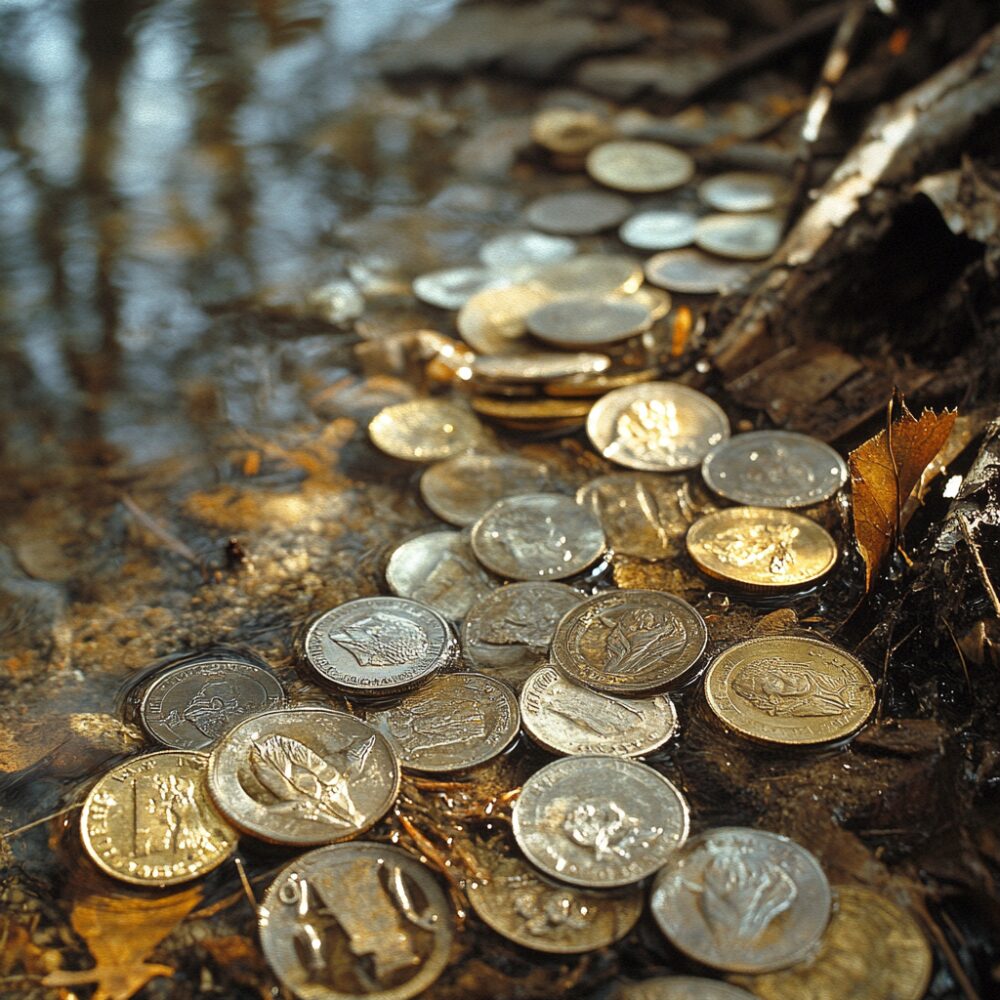
The Old Crow Wing County Bank robbery is a thrilling tale from the 1880s. A group of bandits, believed to be led by a notorious outlaw named Charlie Pitts, targeted the bank in Crow Wing County during its peak as a trading post. The robbers escaped with a significant amount of gold, silver coins, and paper currency.
The gang is thought to have buried the loot in the surrounding wilderness to avoid capture. Some accounts suggest that the treasure was hidden along the Mississippi River or near abandoned settlements in Crow Wing County. Despite efforts to recover the money, the gang was either killed or captured before revealing its location.
The robbery occurred during a time when Crow Wing County was bustling with activity, but the town of Crow Wing itself soon declined. The treasure remains one of Minnesota’s unsolved mysteries, luring treasure hunters with the promise of lost riches.
How much the treasure would be worth today
The stolen loot from the Old Crow Wing County Bank is estimated to be worth around $1.5 million. This value includes the original amount adjusted for inflation and the potential historical value of the coins and currency. If discovered, it would be a monumental find for historians and adventurers alike.
The Lost Treasure of the Spirit Lake Massacre – $3,000,000+
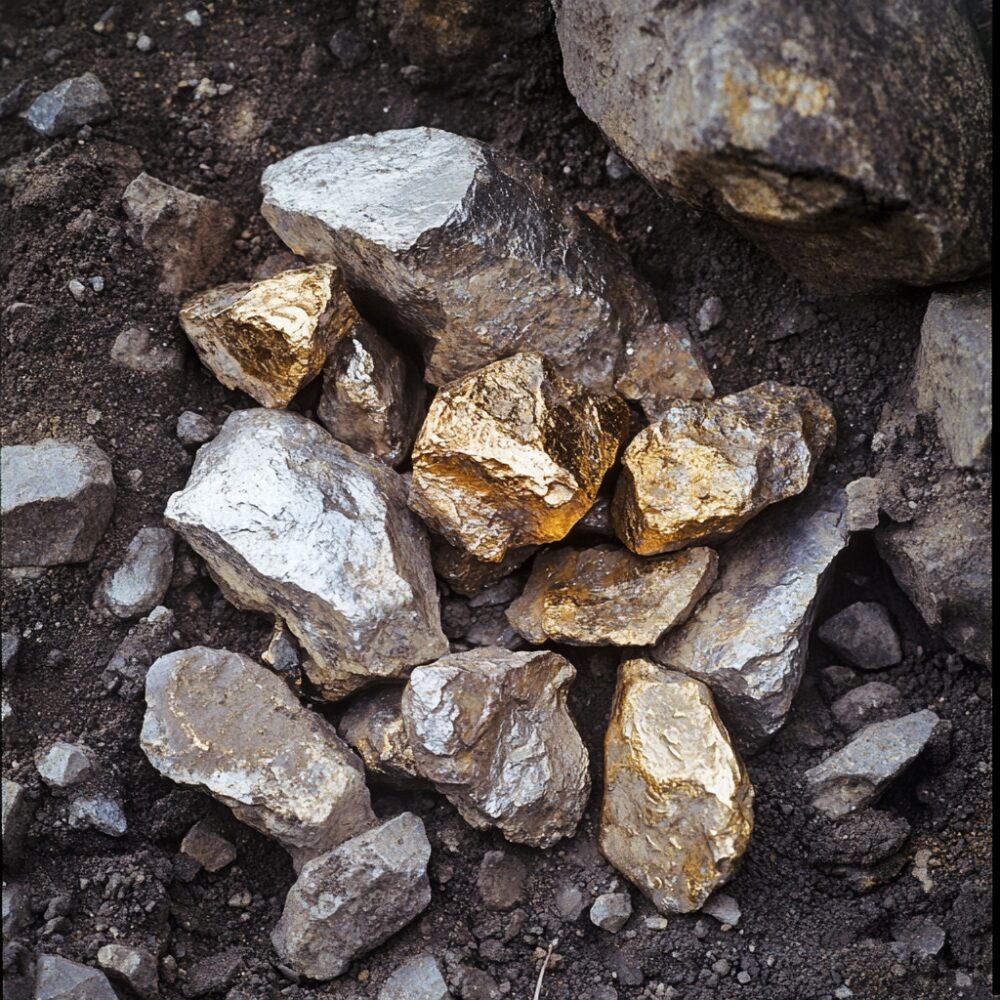
The Lost Treasure of the Spirit Lake Massacre is a tragic and mysterious story from the mid-1800s. During the massacre in 1857, a group of Sioux warriors attacked settlers at Spirit Lake in what is now Minnesota. Among the settlers was a group of traders who were transporting valuable goods, including gold and silver, which were believed to be hidden in the chaos of the attack.
As the Sioux raided the area, the traders are said to have buried their treasure to prevent it from being stolen. Some accounts claim that the treasure was buried near Spirit Lake or in the surrounding forests. The gold and silver are thought to have been hidden by the traders, who never returned to retrieve it after the massacre.
Though many treasure hunters have tried to locate the lost loot, no confirmed discoveries have been made. The treasure is thought to have been buried sometime in the winter of 1857, shortly before the settlers were either killed or taken captive by the Sioux.
How much the treasure would be worth today
The Lost Treasure of the Spirit Lake Massacre is estimated to be worth around $3 million. This estimate includes the gold, silver, and other goods that were hidden during the raid. If found, the treasure would not only hold significant monetary value but also great historical importance, as it is tied to a tragic event in Minnesota’s past.
The Hidden Fortune of the Turtle Mountain Band – $5,000,000+

The Turtle Mountain Band, a Native American tribe originally from the northern Great Plains, is believed to have hidden a fortune during the late 1800s. As the tribe faced conflicts with settlers and soldiers, they are thought to have buried gold, silver, and other valuable items to protect their possessions from being stolen. The treasure is rumored to be hidden somewhere near their homeland, which is located near the Minnesota-North Dakota border.
The treasure is said to have been hidden by members of the Turtle Mountain Band themselves. As tensions rose between Native American tribes and settlers, many tribes hid their valuables to keep them from being taken by outsiders. The exact location of the hidden treasure remains a mystery, but some believe it is buried near the Turtle Mountain Reservation, either in the forested areas or along the shores of nearby lakes.
The treasure is thought to have been hidden sometime after the mid-1800s, during the years when many Native American tribes were displaced and faced battles with settlers. These valuable items were possibly buried to ensure that they would be safeguarded for future generations. Although several treasure hunters have tried to locate it, no one has successfully uncovered the hidden fortune.
How much the treasure would be worth today
It is estimated that the treasure could be worth as much as $5 million today. This is based on the historical value of gold, silver, and other valuable artifacts believed to be hidden by the Turtle Mountain Band.
The St. Croix River Treasure – $3,000,000+
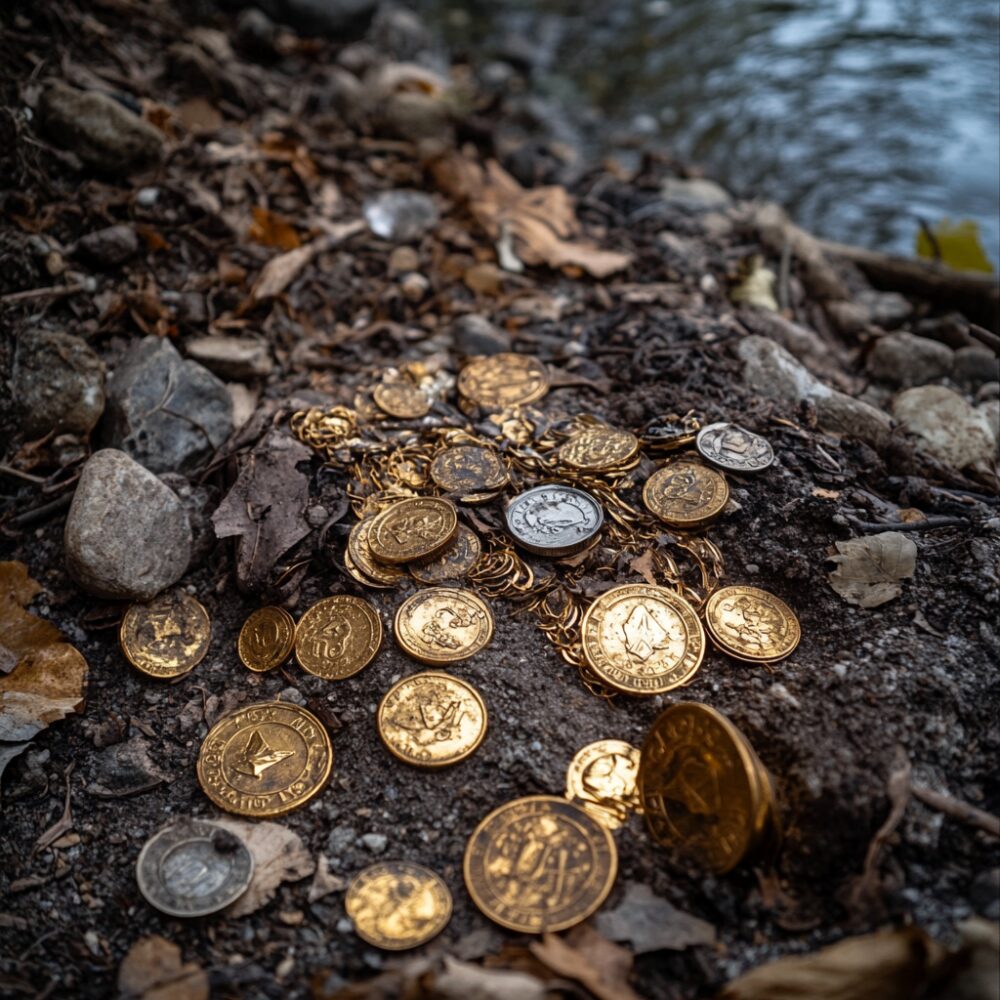
The St. Croix River Treasure is a legendary cache rumored to be hidden along the banks of the St. Croix River. It is believed to contain gold coins, jewelry, and other valuable items left behind by fur traders or early settlers. The treasure’s origins date back to the 1800s when the river was a busy route for trade and exploration.
The treasure is thought to have been hidden by a group of fur traders fleeing hostile encounters with local tribes or bandits. To protect their goods, the traders allegedly buried their wealth near the riverbank with plans to recover it later. However, they may have died or been unable to return, leaving the treasure lost to history.
Many believe the treasure is buried along the river’s more remote sections near wooded areas or caves. Some treasure hunters have searched near Taylors Falls, a region known for its rugged terrain and proximity to the river. Despite numerous attempts to locate it, the treasure has never been found.
How much the treasure would be worth today
The St. Croix River Treasure could be worth as much as $3 million today. This estimate is based on the value of gold and silver that may have been hidden along with valuable goods from the time period.

